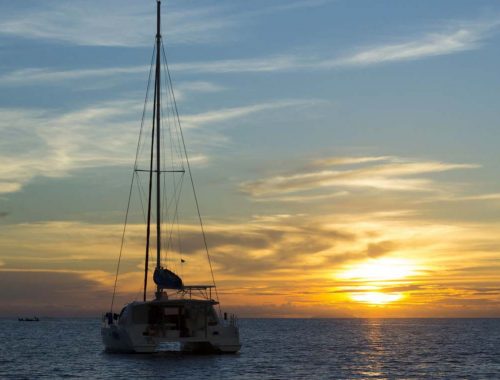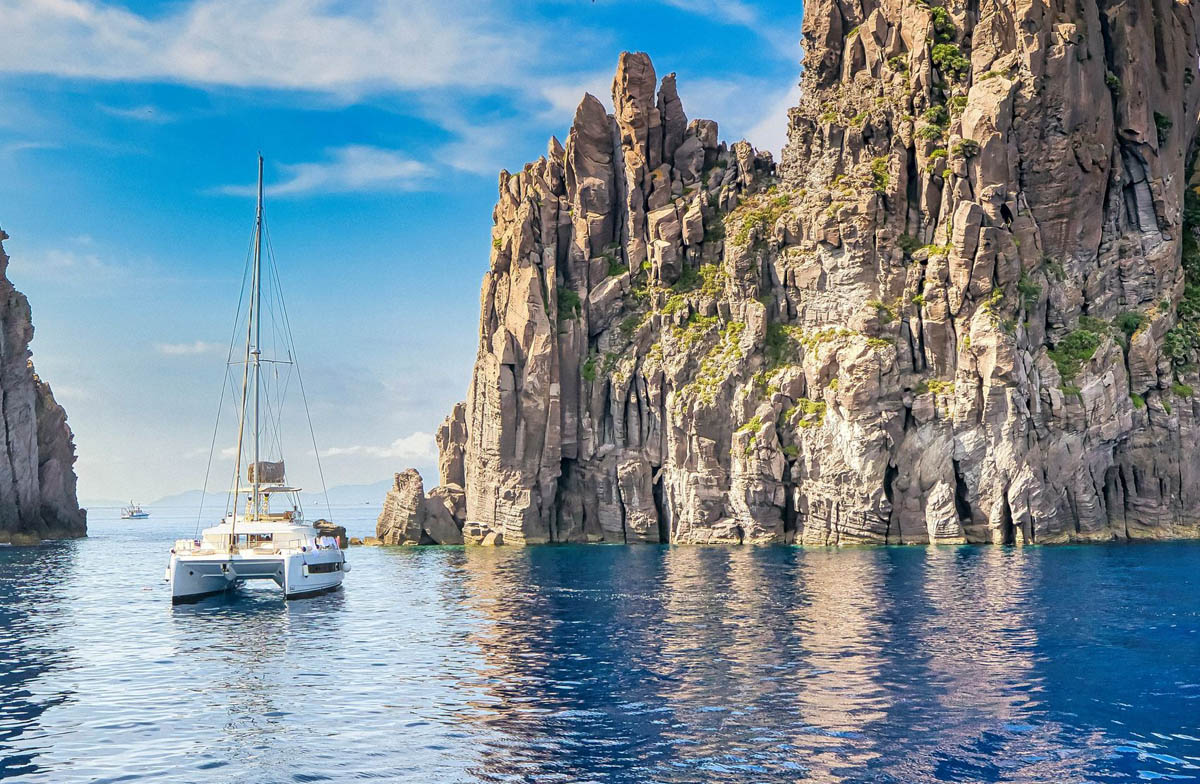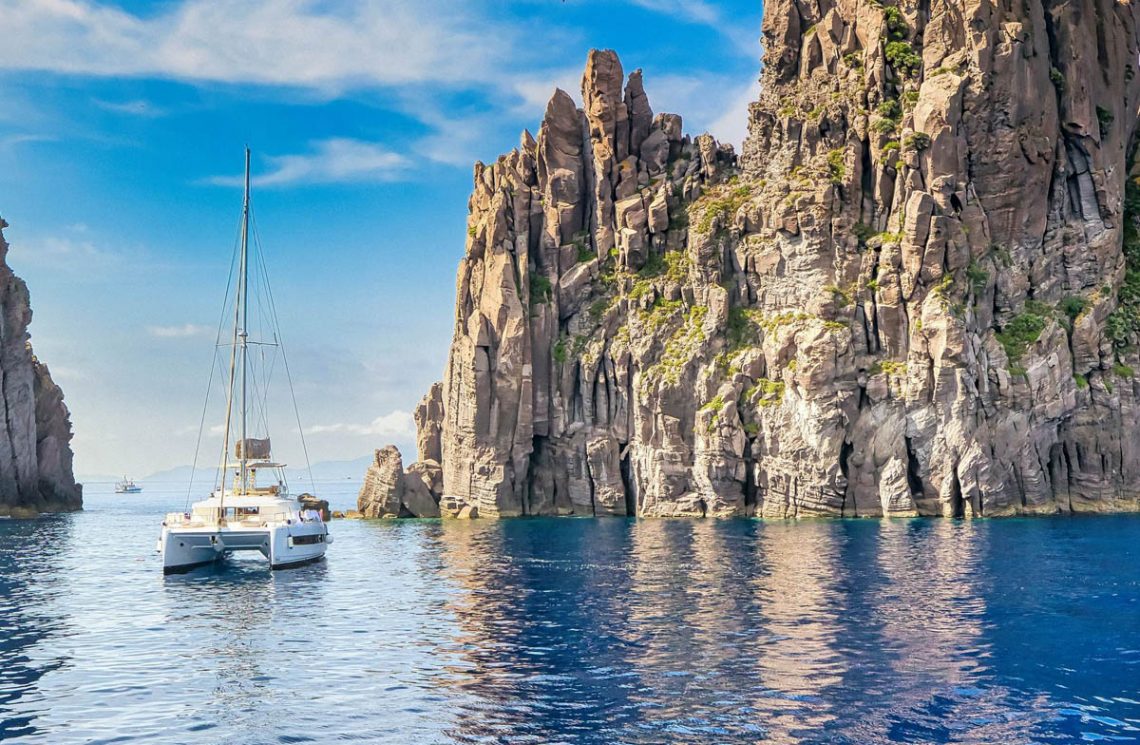
The most beautiful anchorages for a boat stop between the Egadi and Aeolian Islands
Sailing among the Egadi and Aeolian Islands – one of the greatest pleasures of a sailing cruise is the freedom to explore remote anchorages and quiet bays, where you can fully enjoy the beauty and magic of each place. Those who sail in the Mediterranean are truly fortunate — there are hundreds of bays, coves, and sheltered spots scattered along the coasts and among the archipelagos. These are enchanting, mostly unspoiled places, often accessible only by boat. Among the most fascinating areas to experience under sail in the Mare Nostrum is Sicily, the largest Italian island, which itself hides two real gems for sailors: the Aeolian Islands and the Egadi Islands. This guide offers a selection of the most beautiful anchorages between these two small archipelagos, where you can drop anchor and feel as if you’ve found paradise.
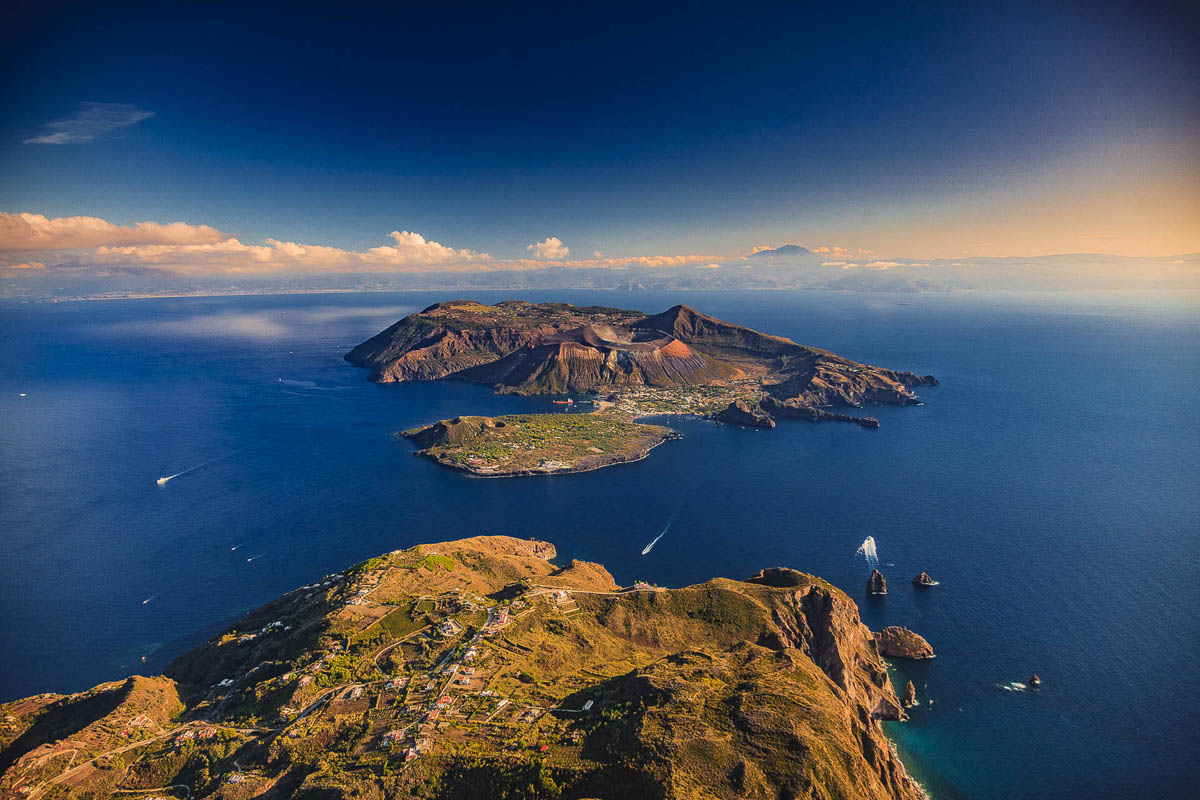
Aeolian Islands, the 7 sisters born of a volcano
Located off the northern coast of Sicily, the Aeolian Islands lie about 30 nautical miles from the Sicilian mainland and are spread across the Tyrrhenian Sea, forming a large “Y” shape. They are seven “sisters” with a common volcanic origin, though each — Lipari, Vulcano, Salina, Panarea, Stromboli, Filicudi, and Alicudi — has its own unique charm. The islands boast crystal-clear seabeds, natural landscapes, two active volcanoes on Stromboli and Vulcano, delightful villages, and the warmth of their inhabitants. Visiting them all in a single vacation is not easy and requires a lot of time. However, here are the bays that are certainly worth stopping at at least once in a lifetime.
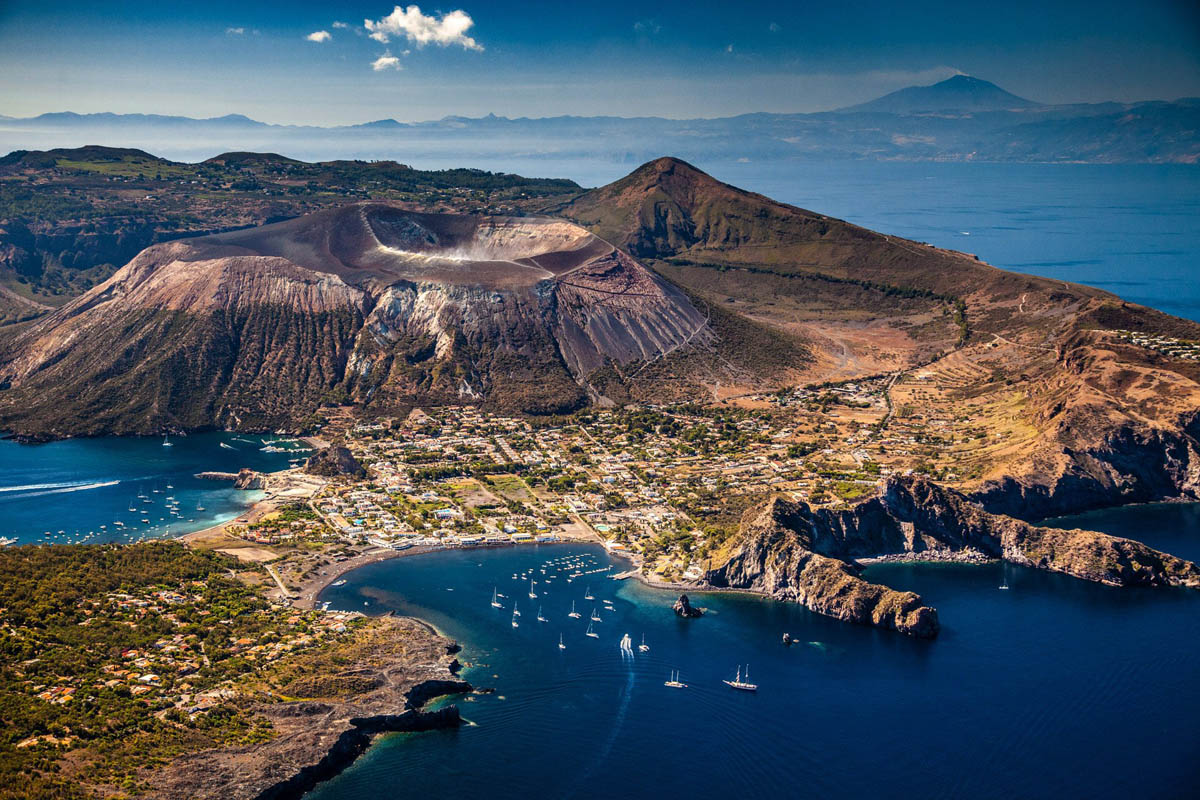
Vulcano Island: Cala Mastro Minico
Cala Mastro Minico is a wild cove surrounded by high cliffs. Its eastern shore features a beautiful pebble beach, in front of which you can anchor in 10 meters of water over sand and rocks. Be cautious of the shoals on the eastern side. Landing here, on the northwest side of Vulcano, you can start the hike to the summit of the Gran Cratere, a lunar-like area rich in sulfur and obsidian crystals. The walk takes about an hour, and it is best to start early in the morning to avoid the midday sun. The caldera is impressive and unique, with fumaroles releasing sulfur-laden smoke. Not far from the cove, in the center of Porto di Levante, there are shops and markets.
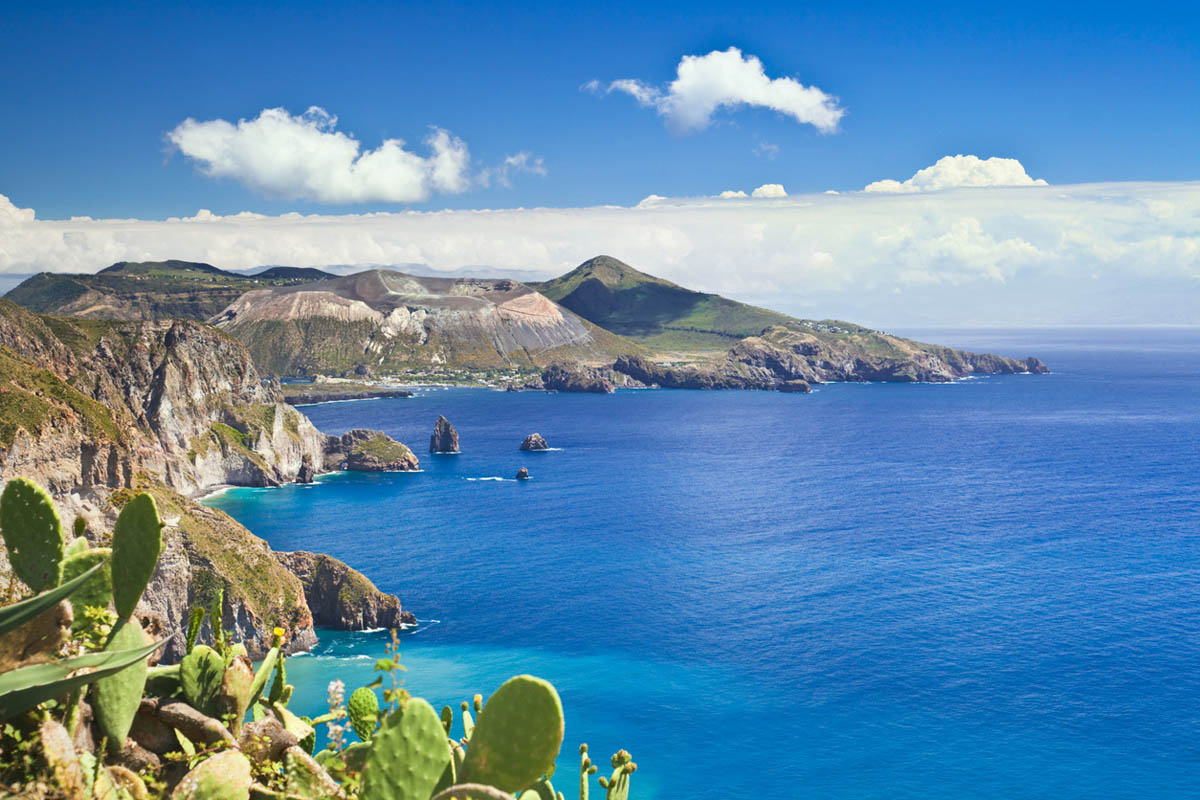
Lipari Island: Cugno Lungo
Surrounded by small cliffs, Cugno Lungo is located on the west coast near San Calogero. At the bottom of the bay, there is a pebble beach; it is better to anchor about 100 meters from it in 10 meters of water over sand and rocks. The historic center of Lipari can be explored in a short time: from Corso Vittorio Emanuele, following the steep Via XXIV Maggio, you reach the Spanish fortress and the Aeolian Archaeological Museum. The museum’s collection of masks, which testify to the Greek cult of Dionysus, is worth seeing. Heading south from Cugno Lungo, in just five minutes you reach the beautiful Belvedere di Quattrocchi, from whose summit you can enjoy views over Vallemuria Beach, the Scogli delle Formiche, the stacks of Pietralunga and Pietra Menalda, and the Brigghio, a smooth volcanic basalt peak.
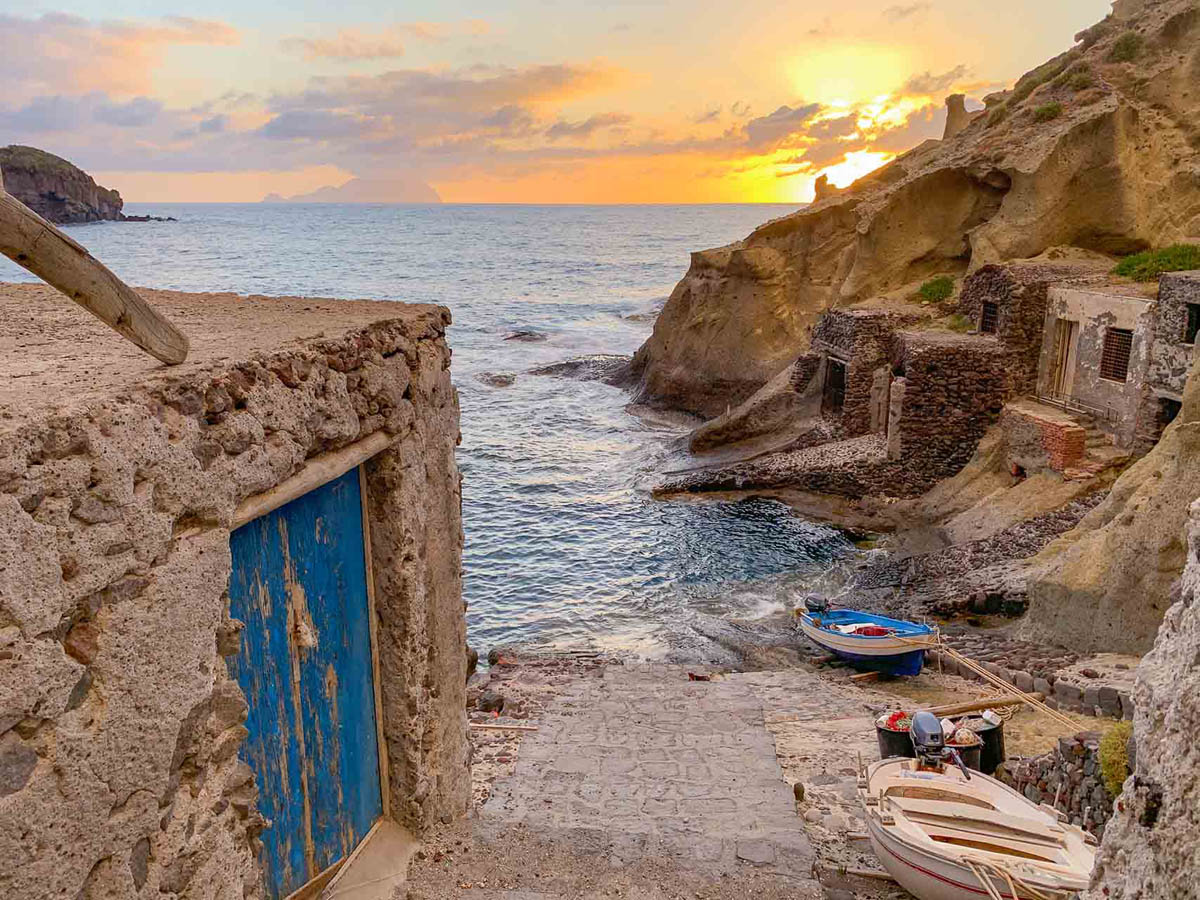
Salina Island: Cala di Pollara
Under Punta Perciato, at the northwest tip of the island, lies the spectacular Cala di Pollara, with its high cliffs and black pebble beach. The best anchorage is in the center, almost directly in front of the village of Pollara. Anchor between the Punta and the Faraglione in 7 meters of water over a rocky bottom. From Poggio del Semaforo, a viewpoint located right above Cala di Pollara, you can admire the most beautiful sunset in all of the Aeolian Islands. This is an emotional spot, not only for its stunning natural beauty: some of the most memorable scenes of the film “Il Postino”, Massimo Troisi’s final masterpiece, were filmed here. Nearby, at the shop of Azienda Agricola Sapori Eoliani, you can purchase high-quality provisions for the boat, such as pickled preserves, pasta sauces, and “cucunuci.”
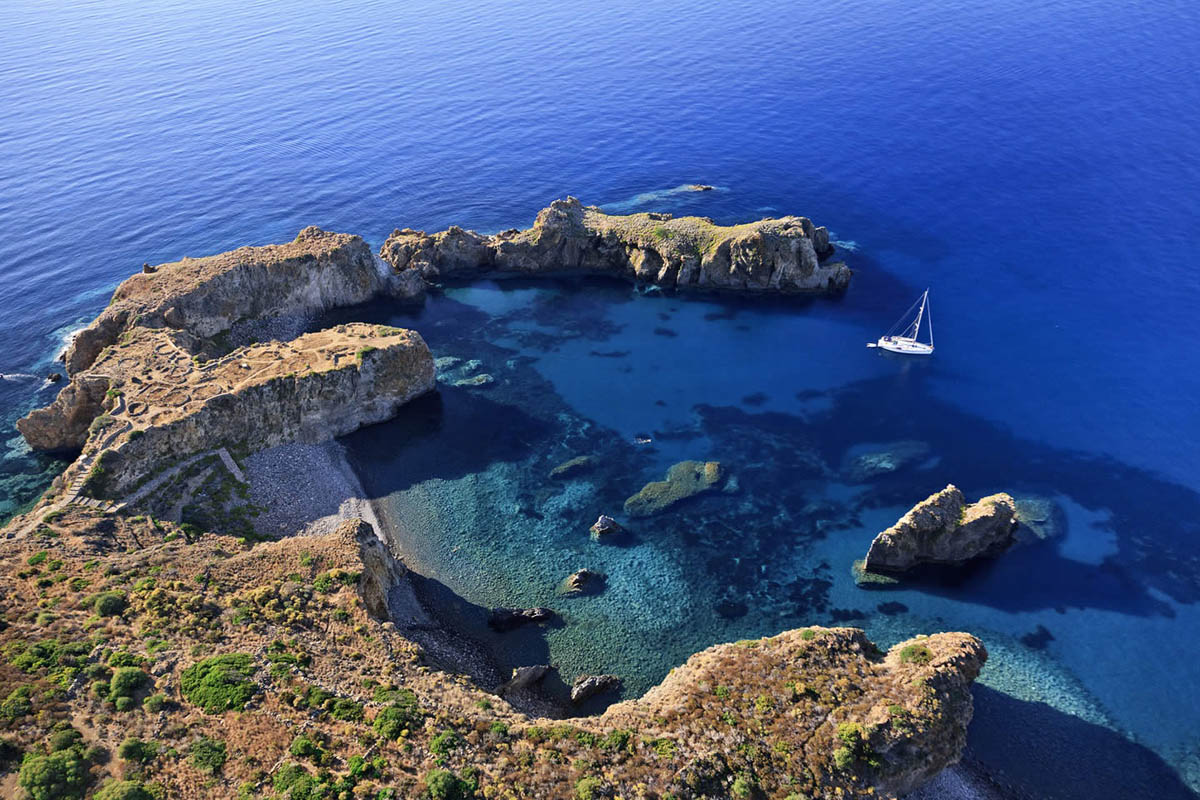
Panarea Island: Baia Milazzese
Located on the southeast coast of Panarea, Baia Milazzese is divided into two small coves. The first, giving the bay its name, features a beautiful beach. The second, on the west side, is called Cala Zimmari and has two more small beaches. You can anchor in the center of the coves in 5–7 meters of water over a sandy bottom. In addition to staying at anchor, it’s also worth going ashore, perhaps to explore the prehistoric village near Punta Milazzese, which reveals Panarea’s millennia-old history dating back to its first inhabitants who settled here during the Bronze Age, around 1200 BC.
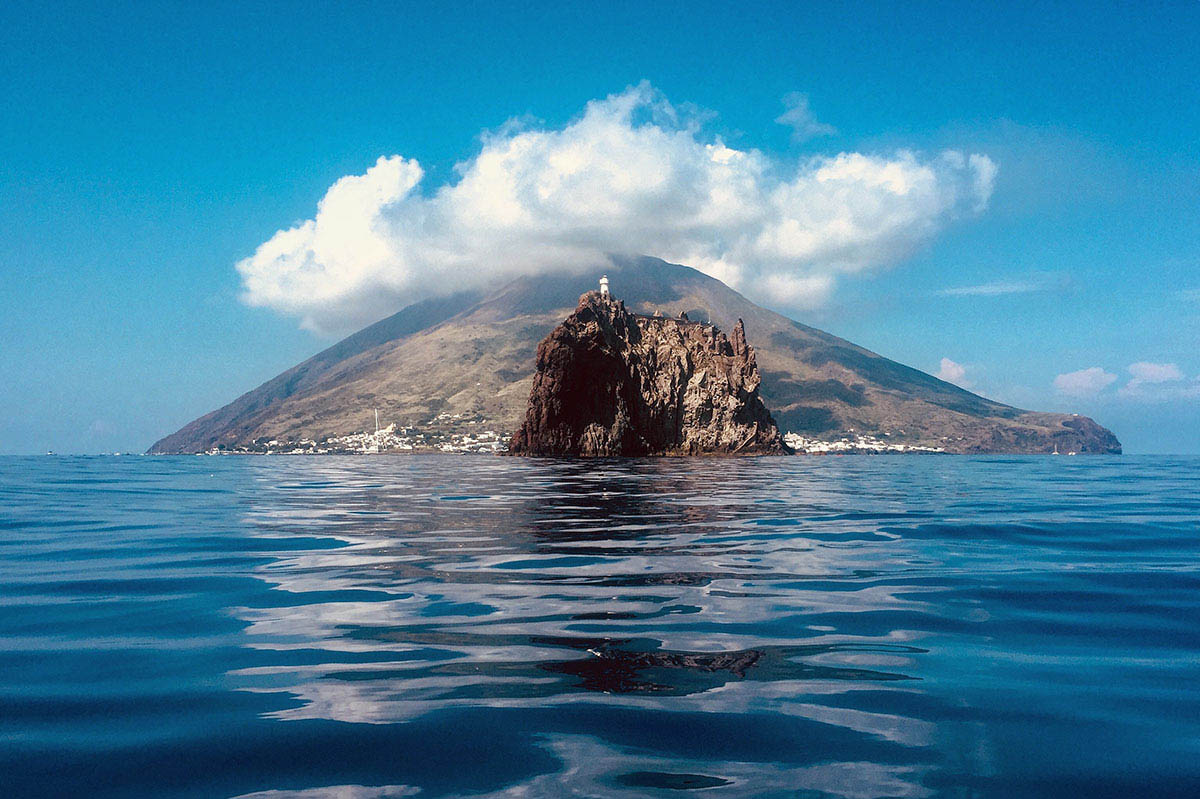
Stromboli Island: Baia di Ginostra
Baia di Ginostra is a small cove located directly in front of the village of the same name. You can anchor in front of the houses, about 80 meters from shore, in 7–8 meters of water over an uneven rocky bottom. This is the southern part of the island, “hidden” behind the massive Iddu, the large active volcano whose summit reaches nearly a thousand meters. It is a natural spectacle not to be missed, including the lava cliffs of the Sciara di Fuoco, located slightly northwest and also accessible by land. The true “show” of Stromboli, however, is best enjoyed from the sea — at a safe distance, of course. Near Ginostra is also the charming and rarely visited Forgia Vecchia beach.
Discover the best boat rental deals
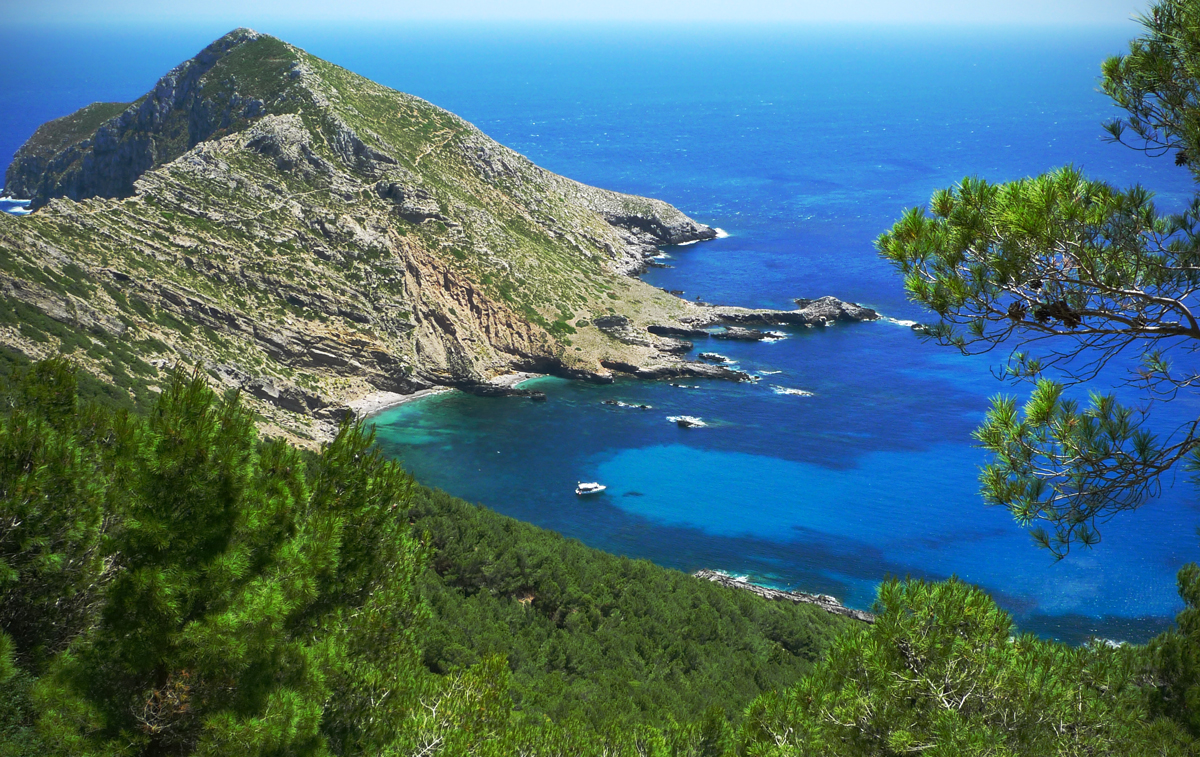
Egadi Islands, the charm of the natural reserve
In northeastern Sicily, between the port city of Trapani, the beautiful bay of San Vito Lo Capo, and the unspoiled nature of the Zingaro Nature Reserve, lie the Egadi Islands, one of the most hidden and welcoming sailing destinations in the Mediterranean. With their magical corners, emerald-colored bays, and an atmosphere far from city chaos, the Egadi Islands are a privileged spot for sailing cruises. Easily accessible from the ports of Trapani or Marsala, they are set within a stunning natural reserve rich in rocky coasts, whitewashed houses, old tuna fisheries, and waters above one of the largest Posidonia meadows in the Mediterranean. Each island is more beautiful than the next: Favignana, the largest; Levanzo, small and chic; and finally Marettimo, reminiscent of the Cycladic Greece. Here is a guide to the most beautiful bays to drop anchor.
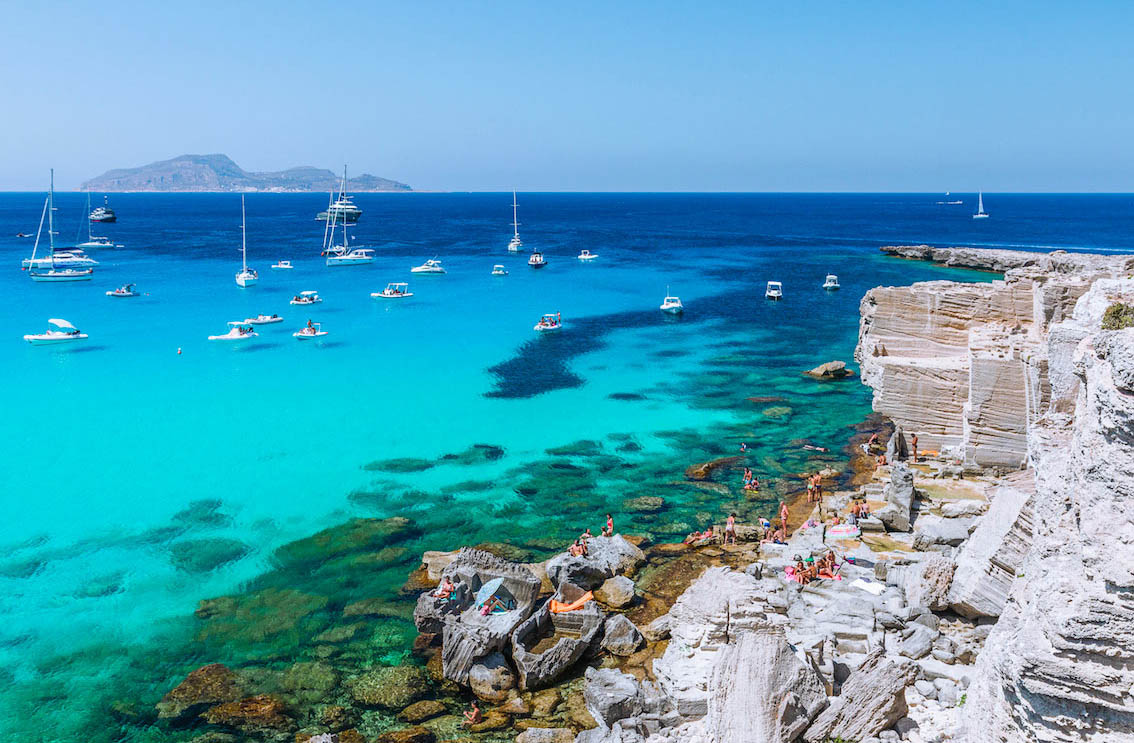
Favignana Island: Cala Longa
Located in the center of the southern coast, Cala Longa bay is protected to the west by the Punta of the same name. Inside the bay, there is a 50-meter pier, but it can only accommodate boats up to 8 meters in length. Alternatively, you can anchor about 200 meters from shore. The village of Favignana is worth visiting, highlighted by the Liberty-style Palazzo Florio. Other points of interest include La Camparia and Forte Santa Caterina. La Camparia was the building where nets were woven and the warehouse held equipment for the famous tuna “mattanza.” Forte Santa Caterina, on the other hand, is a fortress dating back to around the year 1000 AD, built as a lookout tower against Saracen pirates, located atop the eponymous hill.
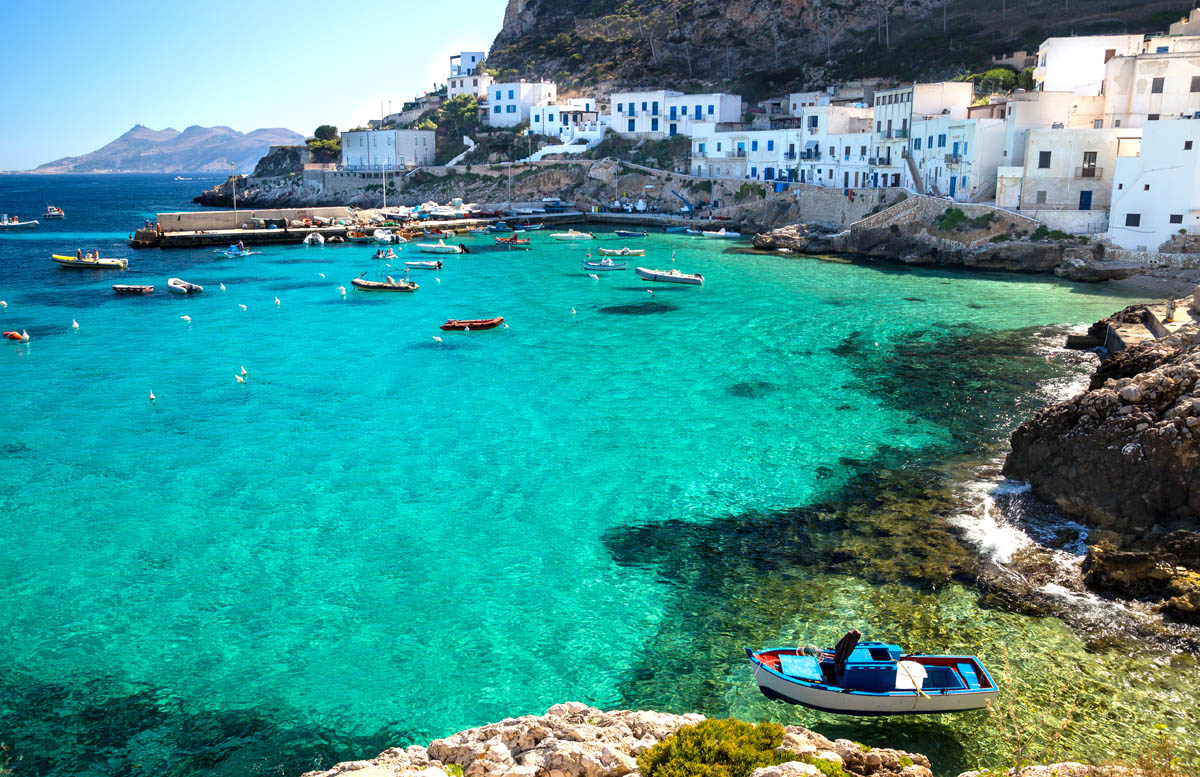
Levanzo Island: Cala Tramontana
Situated in the northwest corner and well sheltered from all westerly winds, Cala Tramontana is protected by a Marine Reserve, where fishing and diving are prohibited. The approach is made easier by the presence of a bunker and a large cave on the beach. Close to the bay, beyond Punta dei Sorci, lies the incredible Grotta del Genovese, a karst cave that hosts the richest site of prehistoric art in Italy, with 33 figures carved into the rock by our ancient ancestors. Once ashore, you can calmly explore the network of trails that cover the island, accessible on foot or, at most, on muleback. In the center of Levanzo village, there are shops, a mini-market, bars, and restaurants.
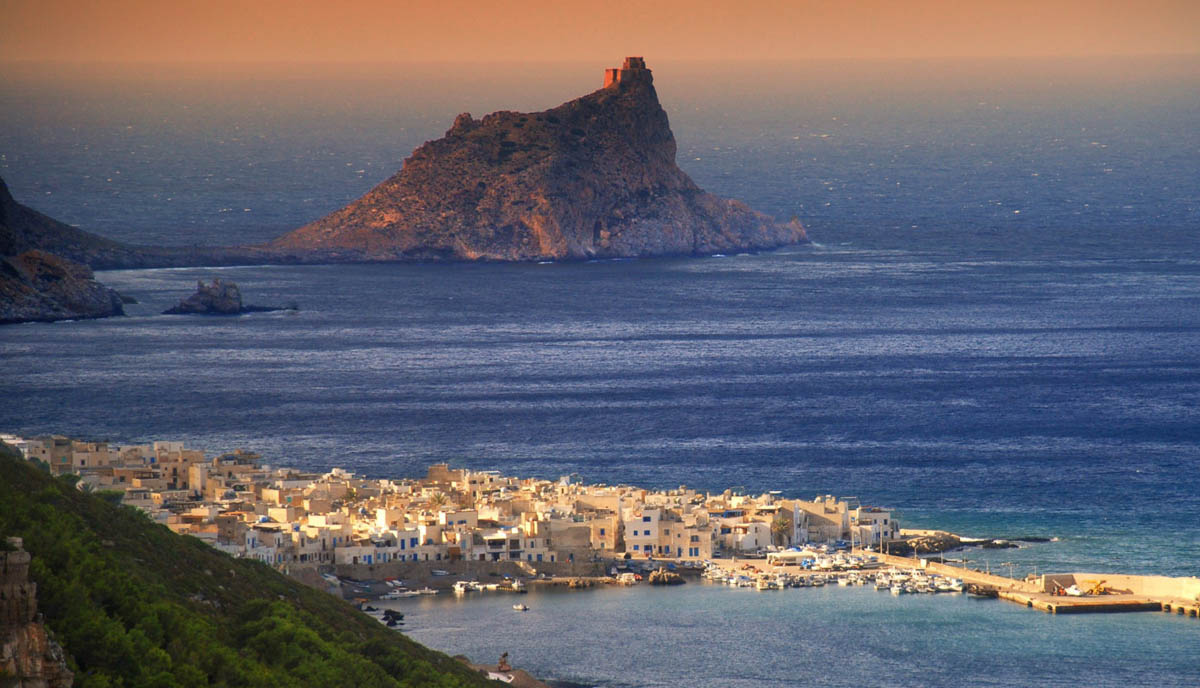
Marettimo Island: Cala Manione
Cala Manione is a small cove tucked into the northeast corner of the island, south of Forte di Punta Troia. You can anchor in 3–4 meters of water over sand and rock; with southerly winds, the anchorage can be affected by swell. Nearby, the imposing Castello di Punta Troia is worth visiting. Built during the Arab domination of the island and later reinforced by the Spanish, it sits atop the small promontory of the same name and houses a small Norman church, offering views of the entire eastern coast of the island. Onshore, you will find a charming small harbor, with fishermen, overturned boats, and nets drying in the sun, right in the center of the village, which is made up of white houses with blue shutters. Across Marettimo, the island hides ancient Roman houses dating back to the 4th century AD, medieval baptismal fonts, dense vegetation, and a community of free-roaming donkeys.
Discover the best boat rental deals
You May Also Like
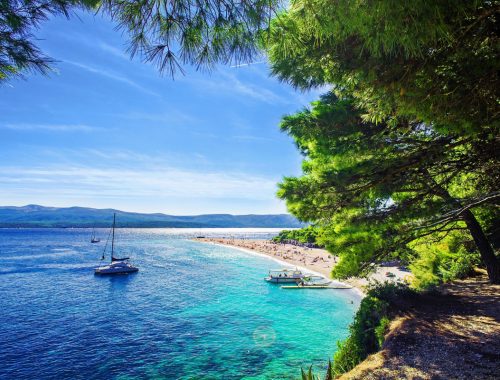
Sailing on the North Dalmatian coast to discover beautiful Croatia
26/04/2024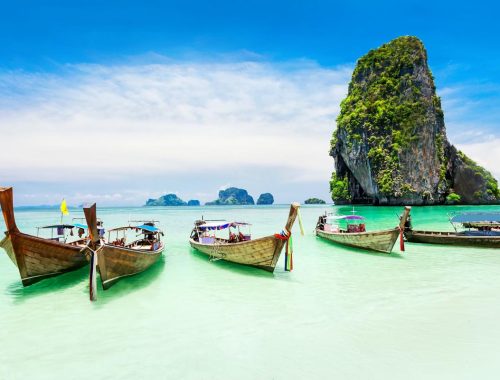
Sailing among the pristine and ‘mystical’ beaches of Thailand
15/12/2024